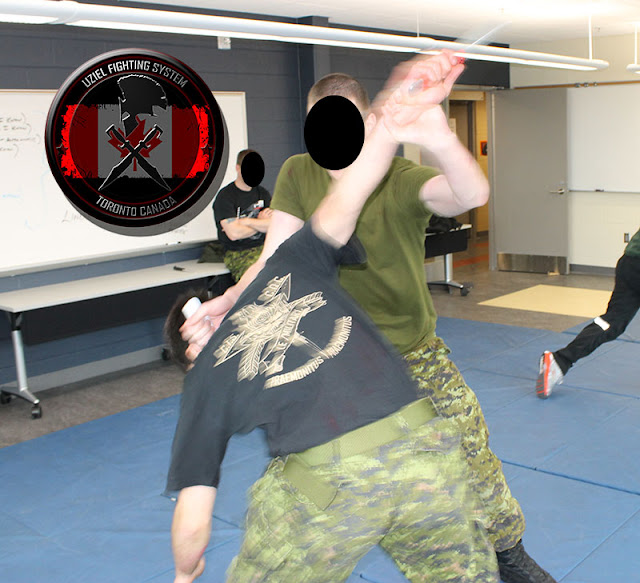MILITARY CQC/ “Realism in the
Classroom environment”
Author: Odhinn Kohout
Students don’t
like to be tested…
It is a
source of stress and anxiety but is much better than the alternative which is
to be vulnerable in a critical incident where the life of their partners or
their own is on the line. In looking at edged weapon training I like to divide
the training into 5 distinct components:
One: Give a 10-15 minute lecture on anatomical
weak-points that are easily accessed by a blade. Don’t know them? Research it. Use
another Instructor as a template and point them out to the class. This is
essential to your program and often omitted by Instructors because in truth,
they can’t be bothered to learn it themselves. Laziness does not cut it when
teaching CQC. We offer Military anatomical knife charts so contact me to order
one: www.UZIELcp.com
Two: The demonstration of the technique
should be clear and concise and also leave time for questions from the class.
DO NOT SAY that; “because of the shortage of time today, we don’t have time for
any questions…” MAKE THE TIME.
Three: Repetition is crucial to learning
and comprehension. Observe your students at this time and point out immediately
what they are doing wrong. Just as important is to praise them when they are
doing it right as well. If you have plastic or rubber training knives this is
the time (and only time) to use them to lessen the chance of injuries.
Four: Replace the rubber knives with a
metal trainer so that their brain will assimilate the sight of a metal knife
with a real one and ingrain a proper threat response. Get the Soldiers at this
point to pick up the speed and go 70%. Keep all the techniques below the neck
line to avoid chipped teeth and direct contact top the eye orbit.
Five: The last segment is testing with a “marking
knife” of some kind. Tell the class that “Whatever partner is defending from
the knife attack. I don’t want to see ANY red lines on a vital blood-flow area!”
PDT Tech makes a great one that we use and endorse for Military training.
Good luck
with your next training session and remember to train for combat!

No comments:
Post a Comment